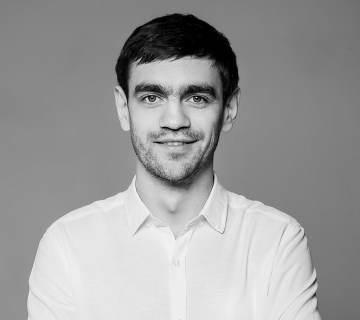
Design
Philosophy

Oleg Chulakov
The author of the emotional
design concept
The author of the emotional
design concept
Why
We take human nature into account in everything we do. We believe that the presence of an emotional connection between the product and the user distinguishes a great company from a good one. We are experts in building emotional connections
How
We disrupt conventional patterns to design products that resonate emotionally. Our apps trigger dopamine releases, establishing a deep bond between the interface and its users, the brand and its consumers
What
We create next-level web and mobile applications
Design
for Humans ©
Functionality
Building robust, multifunctional products is our top priority. Seamless interaction with the product helps users think less when engaging with it
Usability
We anticipate user needs before they’re even expressed, delivering an experience that’s not just functional but truly impressive
Emotions
We aim to create memorable experiences by earning user trust and sparking positive emotions
Our Emotional Design in Action
Creative techniques for product demonstration on the Kia EV6 promo site
functional
A smart assistant for Beeline that provides useful advice
emotional
Animated favicon for the Playkot game developer's website
functional
Style and mechanics of the GORA mining company website
emotional
Bank branches on the metro map with intelligent filters
functional
Switching languages on the 7Flowers website is accompanied by a translated proverb
emotional
A special version of the MSTU website with an interface adapted for people with different needs
functional
AR mechanics in the Emirates NBD bank app
emotional
Creating Emotions through Data‑Driven Design
Our Approach
Our Approach
Total Immersion
We analyse your business processes through interviews with key stakeholders and identify new points of growth
Thorough Testing
We study users through in-depth interviews, explore solutions through UX tests where we gain new insights for user satisfaction
Digital Verification
We test our solutions and look at real product performance. We study metrics and quantitative data before and after a product redesign
Blending quantitative and qualitative research methods to achieve the best results
Outlining Business Goals
CJM
User Flow
Job Stories
Qualitative Research
In-depth Interviews
Eye-Tracking Research
UX Testing
5-Second Test
First Click Test
Preference Test
Card Sorting
Quantitative research
A/B Testing
Surveys
Web Analytics
How It Works
Business
We assess your business objectives, key product metrics, and processes
Users
We conduct in-depth research using both qualitative and quantitative methods to understand user behaviour
Data
We analyse product data and generate hypotheses based on our findings
Result
We create a high quality website based on the information gathered, your requirements and our experience
What Data-Driven Design Gives You
01
Fewer Design
Revisions
Up to 70% fewer changes due to data-backed design decisions, saving you time and money
02
Focus on What Matters
Data-Driven Design ensures we concentrate on essential features, keeping the project on budget and on time
03
Long-Term Resource Savings
We support and optimise your product for five years post-launch, continually enhancing its impact on your key business metrics
UX Lab and eye
tracking
We conduct interviews and qualitative research in our UX lab, using eye-tracking technology to identify usability issues in the product
The eye-tracking device consists of cameras, projectors and algorithms
Illuminators create reflections on the cornea
Cameras capture these reflections and take pictures
ML algorithms are used to determine the gaze position